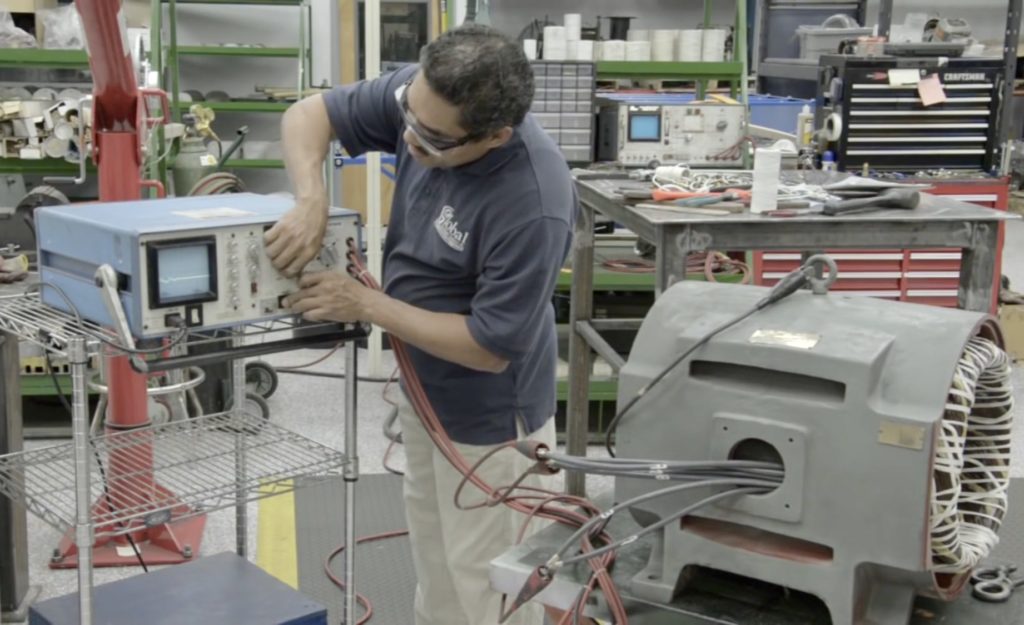If you think you may have bad spindle motor windings, it’s important to know for sure. If you have access to a multimeter, it’s easy to determine if you have an immediate problem. Here is a basic breakdown on how to check motor windings with a multimeter, keep in mind this is just a quick way to determine if your motor is in need of further testing or a full rewind. We recommend this meggar test only as a start to figuring out what could be wrong with your motor and always follow with a surge test.
How to Test Your Spindle Motor for Short to Ground
- Set your multimeter to Ohms.
- Start by completely disconnecting the spindle motor from all power sources.
- Check each wire, including T1, T2, T3 and the ground wire. If the reading is infinite, your motor should be fine. If you get a zero reading or any continuity reading, you have either a motor problem or a cable problem.
- Assuming you did not get an infinite reading, disconnect the motor from the cable and test each separately. While testing, make sure the leads on each end are not touching other leads or anything else. This should allow you to isolate your problem.
How to Test Your Spindle Motor for Open or Short in Windings
- Set your multimeter to Ohms.
- Test T1 to T2, T2 to T3, and T1 to T3. Each time, you should get a reading of around .8 Ohms, although anything from .3 to 2 is acceptable. If you get a reading of 0, you have a short between phases. If your reading is infinite or significantly over 2 Ohms, you probably have an open.
- If your spindle motor fails the test, you may want to make sure the problem is not with the connector, which may have coolant on it that’s interfering with your results. If you dry and retest, you may get a better result.
- Check your inserts. If the motor inserts have burn marks, this may be causing your short and you should replace them. You should also check for wear where the cable moves through tracking.
Checking Your DC Motor for Failure Issues
If you are having problems with your DC Motor, check the brushes:
- Remove the round caps around the motor and check the spring and brush mechanism underneath to see if the brush is worn out and needs replacing.
- Check the commutator — the piece the brushes work against — for wear. Wipe it down if necessary.
If you’re having some trouble determining the problems you are having with your motors, if replacing individual parts is not feasible or having no effect, or if your motor does need to a rewind you can send your motor to Global Electronic Services for repair. We service all models and manufacturers of motors, industrial electronics and hydraulics. We can test, diagnose and come up with a solution for your problem fast. Check out the video below to see exactly how we perform a complete motor rebuild, including a full rewind, balance and dyno test!
We turn around most repairs in five days or less and can even provide one or two-day free rush service if you need it. You’ll get an accurate estimate on the repair before we start work so you know exactly what to expect and our work comes with an 18-month in-service warranty.
If you need help testing or determining what is wrong with your motors, contact Global Electronic Services today, we can also help with all your industrial electronic, servo motor, AC and DC motor, hydraulic, and pneumatic needs — and don’t forget to like and follow us on Facebook!
